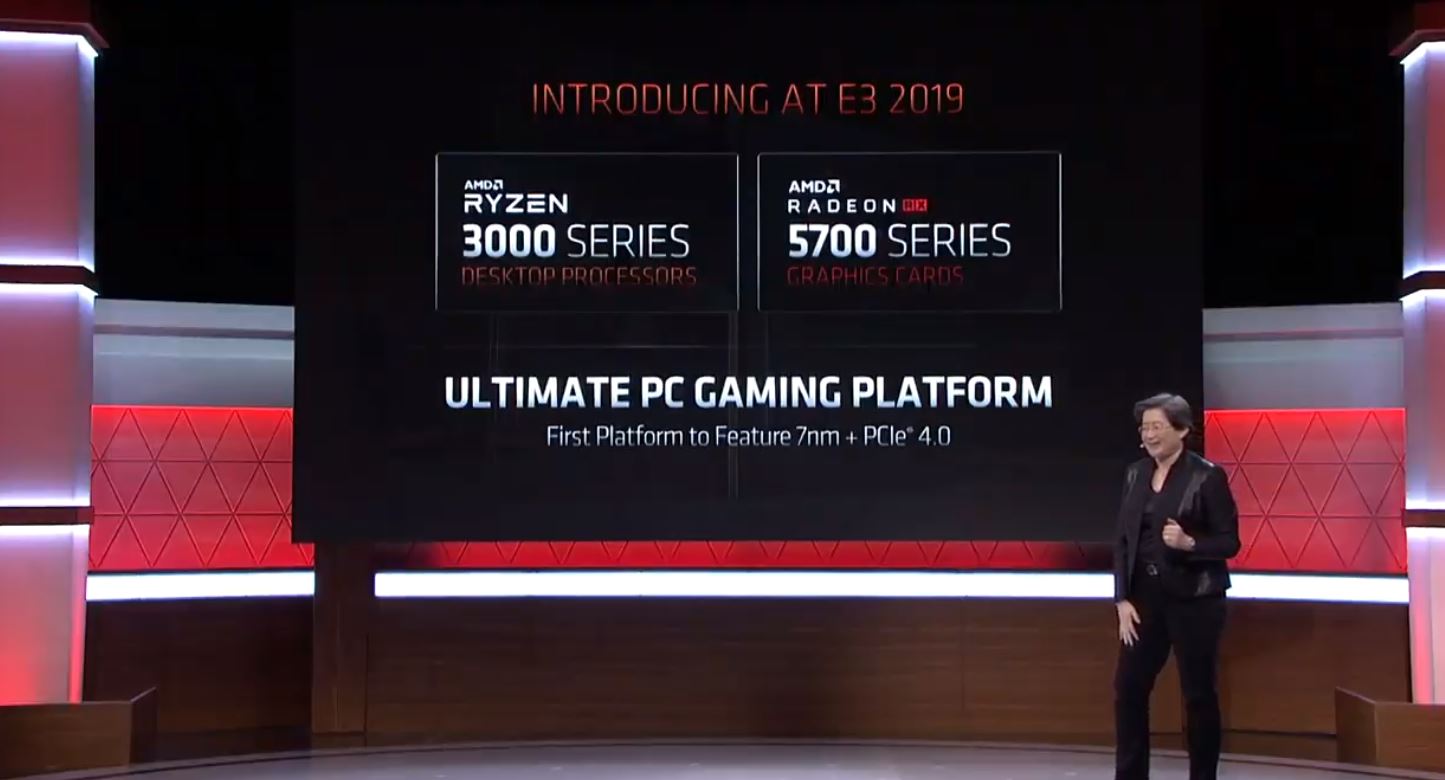For a company that just a few years ago some people had essentially written off as dead, AMD has certainly come a long way. Not only are they one of the top ten best performing stocks of 2019 so far (after enjoying similarly high rankings for all of 2018), the company recently announced major new partnerships with the who’s who of big tech companies: Microsoft for the next generation Xbox One game console (Project Scarlett), Google for their Stadia cloud-based game streaming service, Sony for the PlayStation 5 game console, Apple for the new MacPro, and Samsung for GPU IP intended to power future generations of Galaxy smartphones and tablets.
On top of that, the company just launched its latest generation desktop CPUs, the Ryzen 3000 series at Computex two weeks ago, and yesterday at E3, debuted its newest Radeon GPU cards, codenamed Navi, that are based on a new GPU Architecture the company calls RDNA (short for Radeon DNA). The first commercially available products from the Navi effort are the 5700 line of desktop GPU cards, designed specifically for the gaming market. Also, in a nod to the importance of CPUs in gaming, the company added a new top-end addition to its 3rd generation Ryzen line: the 16-core, 32-thread capable Ryzen 9 3950X.
All told, it’s a broad and impressive range of offerings, and it’s tied together by a few critical decisions the company leaders made several years back. Specifically, AMD decided to aggressively go after leading-edge 7nm process architecture for both CPUs and GPUs and, importantly, chose to pursue a chiplet strategy. With chiplets, different components of a finished chip, made with different process technologies, could be tied together over a high-speed connection (AMD dubbed theirs Infinity Fabric) instead of trying to put everything together on one monolithic die. Together, these technology bets enabled the company to reach a point where it’s starting to do something that many thought was unthinkable: challenge Intel on CPU performance and challenge Nvidia on GPU performance. While final numbers and testing still need to be done before official winners are declared, it’s clear that AMD can now be considered in the elite tier of performance in the most important semiconductor markets, particularly for CPUs. In the GPU space, AMD chose not to compare its new 5700XT to Nvidia’s highest performance GeForce RTX 2080 and RTX 2080 Ti cards, but given the aggressive $449 pricing of the new AMD 5700XT, that certainly makes sense. (AMD is quick to point out that Apple claimed the new AMD Radeon Pro Vega II Duo powered multi-GPU cards in the Mac Pro are the fastest desktop GPUs in the world, but they’re really more of a workstation product.)
The momentum that AMD is currently enjoying is clearly due, in part, to those big technology bets, particularly around 7nm, as well as the fact that they are one of a few major semiconductor players with significant CPU and GPU assets. Again, many industry observers questioned that strategy for a long time, but now that the company is starting to leverage technologies from one side to the other and is really integrating its approach across what, admittedly, used to be two very distinct groups, the payoffs are starting to happen. In addition, the coordinated efforts are allowing them to do things like be the first company to integrate PCIe 4.0 across both CPUs and GPUs, as they’ve done with the latest Ryzen and Radeon products, as well as leveraging Infinity Fabric for both CPU-to-CPU connections (in the Ryzen line) and GPU-to-GPU connections (in the Pro Vega II inside the Mac Pro).
The company’s vision is now broader, however, as it’s started to reach into the server and datacenter market with its Epyc CPUs and Instinct GPUs, even launching what it claims will be the world’s fastest supercomputer in conjunction with the Oak Ridge National Laboratory. The overall Epyc and Instinct market share numbers are still small, and the cloud and datacenter markets are still generally very loyal to Intel and Nvidia, but the fact that AMD is back to being able to compete at all in the server market once again highlights the relevance of its core technology decisions. In addition, though it’s early, AMD’s newly announced partnership with Samsung could finally help the company make an impact on the mobile market—where they have been completely absent. With growing interest in cloud-based game streaming, we could even end up seeing AMD technology in the cloud talking to AMD technology in mobile devices, which is quite a stretch from where they’ve been.
In the end, it’s great for both consumers and businesses to see a truly rejuvenated AMD, because it inevitably forces all of its competitors to get better, which in turn, leads to better products from all the major players, as well as a more dynamic computing market. To be clear, AMD still needs to execute on the broad vision that it has laid out for itself—and unfortunately, execution issues have slowed the company in the past. Still, it’s encouraging to see some key strategies driving new opportunities, and it will be interesting to see what AMD is able to do with them as we head into the future.

Superb post however I was wanting to know if you could write a litte more on this topic? I’d be very grateful if you could elaborate a little bit more.
But wanna say that this really is quite helpful Thanks for taking your time to write this.
Yolonews.us covers local news in Yolo County, California. Keep up with all business, local sports, outdoors, local columnists and more. https://yolonews.us/